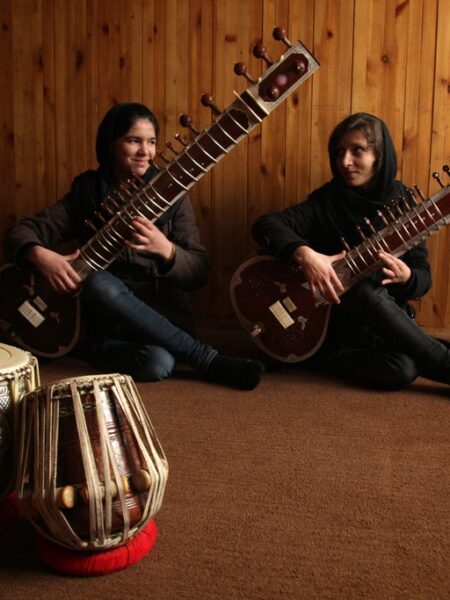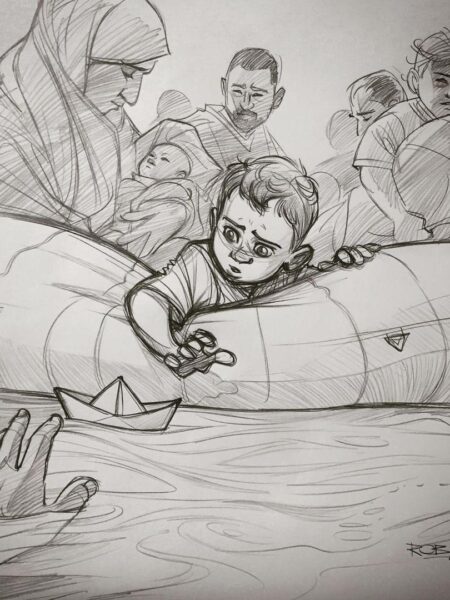An Introduction to the History of Education in the United Arab Emirates
“The credit of any advanced nation is its educated children, and the progress of peoples and nations is measured by the level of education and its spread.”
_Sheikh Zayed bin Sultan Al Nahyan’s, President of the United Arab Emirates (December 1971, November 2004).[1]
Sheikh Khalifa bin Zayed Al Nahyan became president after the death of his father Sheikh Zayed bin Sultan Al Nahyan. Sheikh Zayed set laws for the educational sector and developed schools and curricula after the independence of the UAE from Britain on December 2, 1971. He believed that education is a right for all. His son, Sheikh Khalifa bin Zayed Al Nahyan, came to complete the path of his father before his death on May 13, 2022, he made many educational reforms and faced many challenges that affected the UAE educational sector, especially with the Corona pandemic, during which the idea of online education and blended education emerged everywhere. Thus he equipped schools with the latest technologies and some schools have even abandoned the use of books, relying only on tablets. These reforms had already started before the corona pandemic and during this pandemic, Sheikh Zayed devised the curriculum. In addition, he provided financial aid to some parents so that their children could learn remotely and, he coordinated with the Ministry of Education and Higher Education to prepare instructors for the new curriculum. In his time, education developed a lot and the results of this distinction and development on the educational level appeared through the results of Trends in International Mathematics and Science Study (TIMSS). We note that, with the backing of the President of the State, the Ministry of Education and Higher Education has made considerable progress and the UAE is now listed among the developed countries at all levels, including at the educational level. What is the UAE’s educational history, given that there is no present without a past and no future without a present? How did it go?
Despite the fact that most people talk about the UAE and learn about its current development, few people are aware of the history of education in the UAE since its inception in 1907 and how it began.
The katateeb system has spread since the Islamic conquest (20 AH / 639 AD). This educational system was based on religion and memorization and relied on the relation between the Mutawaa who volunteer to teach mathematics, science, English, Arabic, and Islam religion to the pupils. Despite the progress made by the UAE Ministry of Education at the educational level, nowadays the educational sector faces several problems such as integration challenges for students with learning disabilities, financial challenges related to fees and teacher salaries, the implementation of a new curriculum, and the lack of teaching staff. These difficulties affect parents, students, teachers, and school administrators all alike. The question remains, was the UAE ministry of education able to avoid and solve these problems? Are there solutions to these problems and crises facing the UAE educational sector today within the 2030 educational plan that the UAE has set in the educational sector? Is the katateeb traditional educational system still better than modern education because it does not face such challenges and problems? Can we stay in the past and live according to its style, especially in terms of education? Or do we always have to live in the present and the future?
This qualitative research project aims to explore the educational system in the United Arab Emirates in a transnational perspective, as well as the issues that education is currently facing in the UAE due to the digitalization of teaching methods. On the one hand, the multiple educational models in the UAE were imported from other regions. If the modern education in the Emirates was built on the Kuwaiti curriculum, the katateeb system also came from Kuwait and Saudi Arabia. I will present in this paper who was the first person known as the Mutawaa, – the Imam of the Mosque – where did he come from, and how did Al-Mutawa come to the UAE. The circulation of the katateeb system from Saudi Arabia to Arab countries, including the United Arab Emirates, is also an important part of this investigation.
On the other hand, I will develop a set of questions concerning the history of education and its current challenges in the UAE to learn more about the problems that parents experience in private UAE schools, as well as the obstacles that the UAE’s education industry faces today. Firstly, I will examine the Katateeb system before 1907: What is this method based on? Where does it come from? Was it imported from abroad? Did the UAE export it at some point? Where? Secondly, I will analyze why the UAE educational model has changed. Was it to adapt to global changes? How? Was E-learning introduced to the UAE as a foreign model, and was it later exported by the UAE to other countries? Thirdly, I will focus on the UAE National Strategy 2030 that resulted from all these changes. What reforms did the Ministry of education in the United Arab Emirates adopt to transform the curriculum? Finally, what are the challenges facing the education sector, teachers, and parents in the UAE today? To understand the challenges facing the parents and teachers, In both English and Arabic, I interviewed two mothers and two teachers: Maryam (pseudonym) has two sons and one girl in elementary and intermediate school. She moved to Dubai, where she enrolled her children in a private school, after emigrating from Egypt to the United Arab Emirates. Rima (pseudonym), the second mother I spoke with, is the mother of one boy and one daughter in a primary school. She grew up in Abu Dhabi and sent her children to a private Abu Dhabi school. Nancy (pseudonym) is a native Emirati science teacher with over ten years of experience, who teaches in a private school in Abu Dhabi for fifth and sixth-grade pupils, and the second teacher is Nour (pseudonym), a native Emirati chemistry teacher with over fourteen years of experience, who teaches in a private school in Sharjah for seventh and eighth-grade pupils.
The purpose of these interviews was to learn more about the problems that parents experience at private UAE schools, as well as the obstacles that the UAE’s education industry faces today. The interviews were conducted online using the Zoom app and were not recorded at the request of the interviewees. The names of the teachers and mothers will be kept confidential at their request in order to protect the children from bullying and not to violate the school policies in which the teachers work. This qualitative research study also contains promotional videos and pictures meant to show more about the different steps in the evolution of education in the UAE, from the Katateeb, system and the role of the mutawaa to modern education, semi-organized circles, E-learning, and the challenges that students and teachers faced in the event of the corona pandemic in the UAE.
- Al Katateeb system: The dominant educational system in the UAE before 1907.
- Mutawaa: The Imam who teaches students the history of the Quran and the hadiths of the prophet, as well as the fundamentals of Islam.
- E-learning: a learning approach based on formalized instruction that uses electronic resources. While education can take place in or out of the classroom, E-learning primarily depends on the use of computers and the internet.
The four stages of the education system in the UAE
Education within the Emirates dates back to ancient civilizations, whose heritage is still seen in various locations. Later on, education was provided by teachers who were experts in a very particular field of science. As a result, education in the UAE has evolved from a simple traditional model to one that is backed by lessons, courses, and rules. According to the UAE Ministry of Education, we can distinguish four stages of educational systems that have developed in the Emirates throughout history as a result of our study of the historical evolution of education. These stages are: The Mutawaa and the Katateeb education system, Educational circles, Semi-Organized Education, as well as the modern Education System (Alnabah, 1996).
The Mutawaa and Katateeb

This system was used to instruct people, especially boys, in all Arab countries including Lebanon, Egypt, Kuwait, the United Arab Emirates, and Saudi Arabia. As a result, the first Arab country that established the katateeb system was Saudi Arabia quickly followed by Syria. This method of instruction was later exported to other Arab countries including the Emirates.
Following Abu Al-Dara’s tradition, the mutawaa was in charge of teaching children some simple sciences, mathematics, and the Islamic religion. He committed himself to do good by helping others read the Quran and adhere to the Islamic way of life. The mutawaa taught moral duties to ensure that individuals stay on the right path and do not stray from moral and religious expectations. He was traditionally considered the wise person of the community. People would come to him for advice and arbitrate disputes between them (Alnabah, 1996, p. 31). The people looked after and supported him. As a result, he was completely dependent on the people for his survival. In this system, the most common form of instruction was repetition. The Mutawaa taught the boys children by asking them to repeat what he said. If the Mutawaa was concerned about a child’s learning difficulties, he would talk to the parents personally. This instructional style is still used in many of the less affluent parts of the country today. In more affluent regions, elitist groups arranged al katateeb, a physical venue, or school, where young people learn the Quran, Islamic beliefs, writing, reading, science, and maths, with teachers and additional resources. While the mutawaa often taught from his home, the katateeb system was quite similar to modern primary schools. These schools were mainly located in coastal regions or places where commerce was well established before the foundation of the UAE (Alnabah, 1996, p. 35) (see Figure 1 and Video 1 that shows how the katateeb system worked in the past and how the mutawaa taught his students):
Figure 1: The Katateeb Learning System in UAE before 1907[4]


Source:https://educationinuae02.files.wordpress.com/2015/06/almutawa.jpg
Video 1: The education in UAE in the past from 1907 to 2022
Source:https://youtu.be/lVsZcx3jHew
One can wonder if the education was just available for boys during the katateeb period, or whether the male mutawaa instructed boys and the female mutawaa instructed girls. Was education free, or did the parents pay symbolic things to the mutawaa other than money, such as a basket of fruits? Aside from Arabic, science, and mathematics, the students were also learning a language, but which one? French or English languages? Under the katateeb system, education was only available to boys, implying that there was no equality in education between boys and girls; on the other hand, if the Mutawa took symbolic things such as a basket of fruits and other than money from the parents of his students in order to teach them why he was called Al Mutawa? In this case, he did not volunteer to teach children because volunteering is free.
What is the second stage of education in the United Arab Emirates? What about the teaching method? Is it superior to Katateeb? Do some individuals still use the katateeb system? Is it now a distant memory? The educational circles, following the katateeb system, are the second stage of education. The katateeb system is still used, albeit only in a minority of cases. Here’s a quick rundown of educational circles in UAE.
Educational Circles (Traditional Learning) and Semi-Organized Education in the 19th century
Educational Circles were closer to the traditional teacher/student approach, in which a teacher would transmit knowledge to a group of pupils through a lecture. Educational Circles were led by respected religious scholars with a considerable understanding of Islam, languages, and other related disciplines. These professors frequently traveled from Saudi Arabia after receiving a personal invitation from the local Sheikh or other affluent sponsors. In addition, these academics would occasionally give their time to assist in the education of individuals in other fields.
Regarding the approved educational approach, indoctrination, I believe the educational circles’ system is quite similar to the katateeb system. However, following this level came the semi-organized education stage, which is regarded as a more advanced step than the two previous systems. This system developed as a result of the alyagadha al arabiya religious movement. This organization advocated for an Arabic awakening, and one of its main beliefs was education. In the Emirates, Sheikh Mohammad bin Ali al Mahmood established the first school in Sharjah in 1907, the Al Islah Al Taymeya School. He cooperated with the Ministry of Education and Higher Education in Egypt to introduce part of the Egyptian curriculum to the Emirati curriculum. After the establishment of this school, other schools and new teaching systems spread, until 1930 when the modern Education System appeared.
The Alqasimiah School, also founded in Sharjah in 1930, was the first organized modern school. The school adopted the Kuwaiti curriculum in 1953 and provided students with Kuwaiti literature, materials, and teachers. These fledgling institutions served as stepping stones to the current educational system (see Figure 2 and Video 2 focusing on education in the UAE today, including semi-organized learning in private and public schools):
Figure 2: Modern Learning System in UAE[6]



Source: https://educationinuae02.wordpress.com/2015/06/
Video 2: The education in UAE in the modern times (1953 -2012)
Education in the United Arab Emirates in the modern era: Institutional efforts to break through from schools to a distance education learning system, and emulating other Arab countries.
Since its independence in 1971, the United Arab Emirates has made every attempt to improve education. It has established high-quality public and private schools and universities, and it has become the most advanced Arab country in international education, as evidenced by the results of a study on trends in international mathematics and science (TIMISS) that shows the UAE’s superiority in science, mathematics, and languages.[3] Therefore, other Arab countries have sought to develop their own learning system on the model of the UAE’s, imitating its remote teaching and emergency plan during the Corona pandemic. The Emirati government has provided schools with modern devices that facilitated distance learning. As a result of the UAE’s ability to keep up with technological progress in education, politics, economy, and social issues, several Arab teachers have emigrated to the UAE to teach in its schools. Other Arabs have also emigrated to the UAE due to the government’s attempts to develop the country. We should also note that the UAE has provided financial aid to some foreign countries during the Pandemic, to help students in distance education by securing laptops, and smartphones.
Despite the educational progress made by the UAE, as evidenced by the results of the TIMISS study, and the aid provided by the UAE government to some Arab countries to face both the Corona pandemic and deteriorating economic conditions, the UAE has sought further educational development and has developed a plan for the educational system for the year 2030. The National Strategy for Higher Education 2030 was launched in the United Arab Emirates in 2021. The strategy aims to equip future generations with the skills they will need to push the economy forward. It also intends to equip a generation of Emirati professionals for advancement in key areas such as knowledge, economy, entrepreneurship, and the UAE’s overall labor market development.
Despite the educational plan that it has set for the distant future, and the advanced tools that it uses in private schools for advanced education, and because public schools in UAE did not develop, the UAE is facing difficulties at this educational level such as Financial problems, training all the teachers and these difficulties and challenges have affected teachers, parents, students, and principals of private schools. The question is, are solutions to these difficulties included in the 2030 plan? Or did these difficulties appear after the development of this plan?
Challenges facing the education sector today in UAE private schools.
In public schools in all countries, especially in the United Arab Emirates, teachers teach from books. In addition, public schools receive a large number of students, and there is no time to know if each student understands the information or not, whereas the private schools in the UAE are now facing several challenges such as development and funding. To stay up to date with new methods of teaching, the Ministry of Education has developed curricula, produced effective teaching methods, and trained instructors. The development of schools with cutting-edge educational technologies resulted in a crisis. On a financial level, private schools equipped with the latest technologies have increased their school fees. Because many parents are unable to pay these new school fees, Nancy said, the schools are facing severe challenges such as financial challenges, and development challenges, and there has been delay in paying salaries for teachers. Nancy has witnessed more and more challenges for teachers in the educational industry during the past few years, such as the development of instructional activities and the integration of pedagogical theories such as the 8 multiple intelligence by Howard Gardner Theory in order to educate a generation of thinkers and analyzers. Addressing integrating specialized education in the classroom is difficult and it constitutes a difficulty and a challenge for private schools in terms of bringing teachers who specialize in learning difficulties. Maryam, an expatriate mother of a child with autism, said: “I was suffering a lot with my child, especially when I was in Egypt because in my country there are no reliable centers for specialized education, so my husband and I decided to move to the UAE because I heared about Sanad Autism Village, an advanced center for autism cases, but its very expensive center.”
Teacher Nour, on the other hand, spoke about the challenges of the educational sector in the wake of the Corona pandemic, saying, “The biggest challenge is teaching specialized education students online because the teacher wants to make more effort with a student with Attention Deficit Hyperactivity Disorder (ADHD) for example, when I want to give students with my ADHD an individual activity online, they will find it difficult and I will face difficulty also. “Most of the students were puzzled when we shifted from online education to hybrid education because their knowledge was split between what they had acquired online and what they were studying in class,” Nour said (see Video 3 on the challenges Dubai students faced in hybrid and online learning in a UAE school and Video 4 ):
Video 3: E-learning: boosted by the pandemic, where is the teaching method headed?
Video 4: Is E-learning killing education?
Source:https://youtu.be/MiJ5brivKNg
On the other hand, mother Maryam provided information on private school tuition expenses in the United Arab Emirates and this is what she said “High prices of education, both at the school and higher education level continue to be a barrier for students and parents,” She added, getting an excellent education is costly. Parents are burdened by hidden fees such as school books, transportation, uniforms, and field trips, even if the school rates are affordable.” Rima also mentioned that the daughter of her close friend, who is also an emigrates, wants to finish her education in the secondary stage, but the girl faces problems in enrolling at school. She wants to take a certificate and submit the required papers, but the school arbitrarily decided whom to enroll and not to enroll, and she has to wait for a long time to find out if she has been accepted or not. It is her fate because the school for expatriate kids requires a large number of documents to be submitted, and the kids are placed on a waiting list. Will we suffer the same challenges that parents face now if we continue to live in the katateeb learning system? Is E-learning killing education? (see Video 5 about the evolution of learning systems in UAE and Video 6 about the UAE education revolution):
Video 5: The evolution of UAE education
Source:https://youtu.be/UVRm7IeP77A
Video 6: The UAE Education Revolution
Source:https://youtu.be/cn91G7vmLKA
Conclusion
In the United Arab Emirates, education has experienced at least four cycles of reform. However, the heritage of these four phases can still be found today in alternative practices. The United Arab Emirates pioneered the notion of free public education in the region. As a result, education is often regarded as a tool for ensuring the nation’s and region’s economic and social independence. Education is viewed as a tool that can be used to lead and modify society in the future. Islam continues to influence pedagogic practices in the UAE and is still an important part of the educational system.
Footnotes
[1] في ذكرى الشيخ زايد (emaratalyoum.com) Sheikh Khalifa bin Zayed Al Nahyan, president of the United Arab Emirates from November 2004 to May 13, 2022 before he died.
[2] https://educationinuae02.files.wordpress.com/2015/06/almutawa.jpg
[3] https://nces.ed.gov/timss/
[4] https://educationinuae02.wordpress.com/2015/06/
[5] https://images.app.goo.gl/2qbXjeQkL5Jgymms6
[6] https://mawdoo3.com/%D9%88%D8%B3%D8%A7%D8%A6%D9%84_%D8%A7%D9%84%D8%AA%D8%B9%D9%84%D9%8A%D9%85_%D9%82%D8%AF%D9%8A%D9%85%D8%A7%D9%8B_%D9%88%D8%AD%D8%AF%D9%8A%D8%AB%D8%A7%D9%8B
References
Articles & Book (English Language)
Alnabah, N. (1996). Education in the United Arab Emirates. Abu Dhabi, UAE: Alflah.
Russell, R. F. (2001). The Role of Values in Servant Leadership. Leadership & (Vol. 22(2)).
Alrawi, M. (1996). Education in the UAE. Abu Dhabi, UAE: Alflah.
Websites (English & Arabic Language)
English
- What is the difference between education present and in the past in uae? – Answers
- https://u.ae/en/about-the-uae/strategies-initiatives-and-awards/federal-governments-strategies-and-plans/national-strategy-for-higher-education-2030
- https://www.emiratesnbd.com/en/new-to-uae/move-to-uae/education/education-system-in-the-uae/
- https://wenr.wes.org/2018/08/education-in-the-united-arab-emirates
Arabic
- https://al-ain.com/article/the-march-of-education-in-the-uae-46-years-space%20
- https://www.emaratalyoum.com/life/culture/2014-12-14-1.736985
- https://www.bayut.com/mybayut/ar/%D9%85%D8%B1%D9%83%D8%B2-%D8%B2%D8%A7%D9%8A%D8%AF-%D9%84%D9%84%D8%AF%D8%B1%D8%A7%D8%B3%D8%A7%D8%AA-%D9%88%D8%A7%D9%84%D8%A8%D8%AD%D9%88%D8%AB/
- https://educationinuae02.wordpress.com/
Ministry of Education in UAE website





